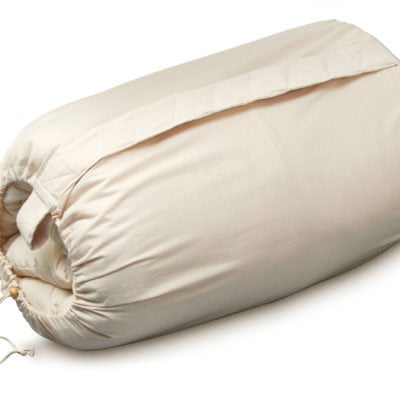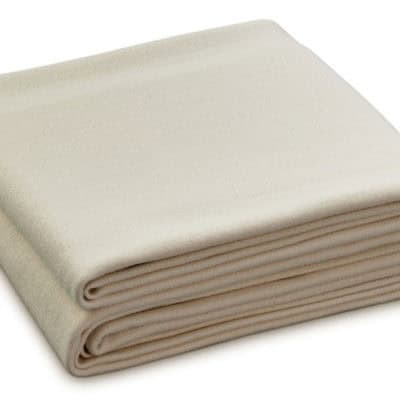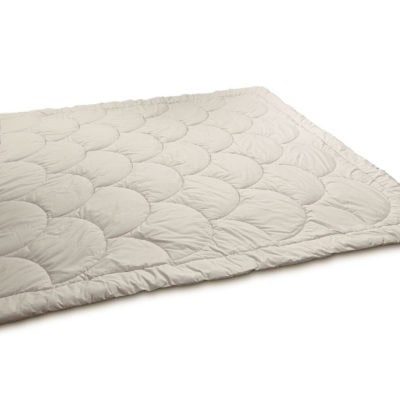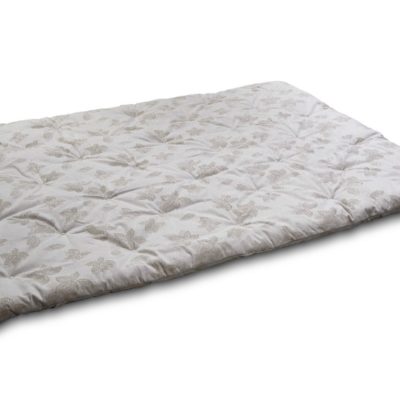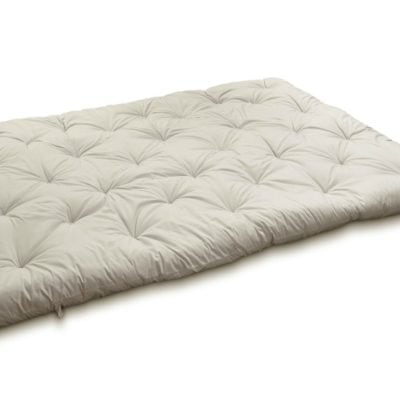Why Wool?
Why Wool Sleeps Best

Wool batting supports and distributes body weight better than any other material.
- Synthetic fiber and micro-fiber (narrow denier) batts contain smooth fibers. These don’t offer structure because they don’t resist each other when they come in contact. As a result, synthetic batts bottom-out when body weight is directly applied. They can’t support body weight well, nor can they distribute weight away from pressure points and tender points. Fiber breakage is also a problem over time.
- Goose down, which is commonly a mix of soft underbelly plumes and feathers, provides more support than smooth synthetic fibers, but still tends to bottom-out under body weight and also doesn’t support and distribute body weight away from pressure points and tender points.
- Cotton fiber batts deliver more support than synthetics or down, but their support tends to be short-lived because the fibers break and/or matte down. Consequently, they don’t support and distribute body weight away from pressure points and tender points.
- Wool batts, however, have a natural resilience not found in the above materials. This resilience is a function of the natural crimps (or springiness) found in the wool fibers and the hair-like scales or burrs found on each fiber. These all-natural attributes create a weight-supporting structure with the non-woven batting, like no other material.
Because of these all natural attributes, only wool has the dynamic ability to support and distribute body weight away from pressure points and tender points, which relieves pain in joints and soothes aching muscles, better than any other material – natural or synthetic. In addition, wool fibers are considered the strongest of natural fibers, because they can be stretched to 140% of their original length and can be flexed 20,000 times before they break. Even wool batts will compress over time. But given reasonable care, Cuddle Ewe™ underquilts will retain most of their loft (thickness) and softness over the life of the product, which is about six (6) years.
Wool insulates as well as, or better than, other materials.
- Synthetics and especially micro-fibers (e.g. Thinsulate™ ) are known to trap quite a bit of air and are thus, very good insulating materials.
- Goose down, at least an 85%+ mixture of plume and feathers, is also a very good insulator.
- Cotton fiber is not as good of an insulator as micro-fibers or down, but because it breathes well, it’s preferred for some applications.
- Wool insulates as well as micro-fibers or down, with the added benefit of breathability. Because wool can breath, Cuddle Ewe™ underquilts can insulate and keep you warm to your exact body temperature; 98.6°F.
In other words, a Cuddle Ewe™ underquilt will not raise your body temperature, but keeps it at a constant 98.6°F, so you will not overheat while you are sleeping and wake up.
Wool manages moisture like no other material.
- Synthetic fibers absorbs less than 1% of moisture, so any moisture given off by your body has to pass through your blankets and mattress or it will condense on your skin as perspiration.
- Goose down absorbs some moisture, but will rapidly load up and become wet to the touch, making it very uncomfortable to be in contact with.
- Cotton fiber also absorbs a significant amount moisture, but it, too will load up with moisture and become wet to the touch, making it uncomfortable to be in contact with.
- Wool, however, can absorb up to 30% of its weight in moisture yet will not feel wet to the touch. This unique ability allows 100% pure wool Cuddle Ewe™ underquilts to remain comfortable even when wet. The moisture absorbed overnight from your body is then given off into the air when you get out of bed in the morning. This attribute of wool is what makes sleeping on wool in hot, humid, climates much cooler and comfortable than any other material.
Wool is naturally fire resistant.
Almost all synthetic fibers are flammable. They can be coated with nonflammable materials, but there is still a significant risk of flammability over time.
- Goose down is somewhat flame resistant because it can absorb water.
- Cotton fiber, although it absorbs moisture, can kindle if exposed to a flame for a long enough period.
- Wool because of its ability to absorb 30% of its weight in water, is virtually flame resistant. Cuddle Ewe™ underquilts will not burn, but will instead smolder keeping you safer than most other bedding products and materials. Cuddle Ewe™ uses only the “best Cheviot wool.”

